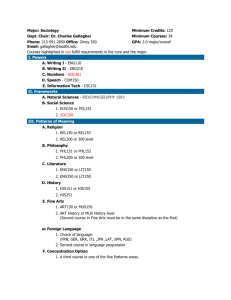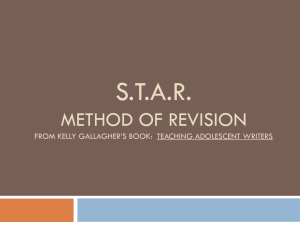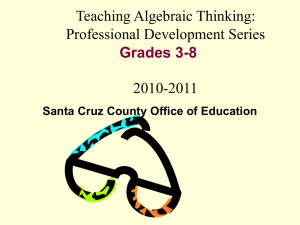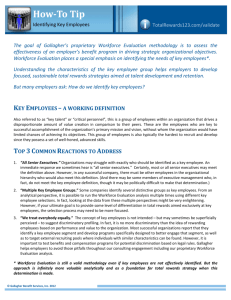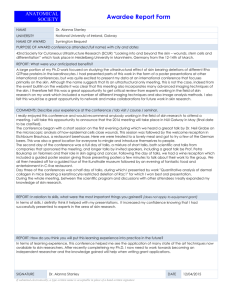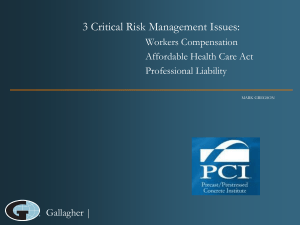ED 420 - Blogs @ Butler
advertisement
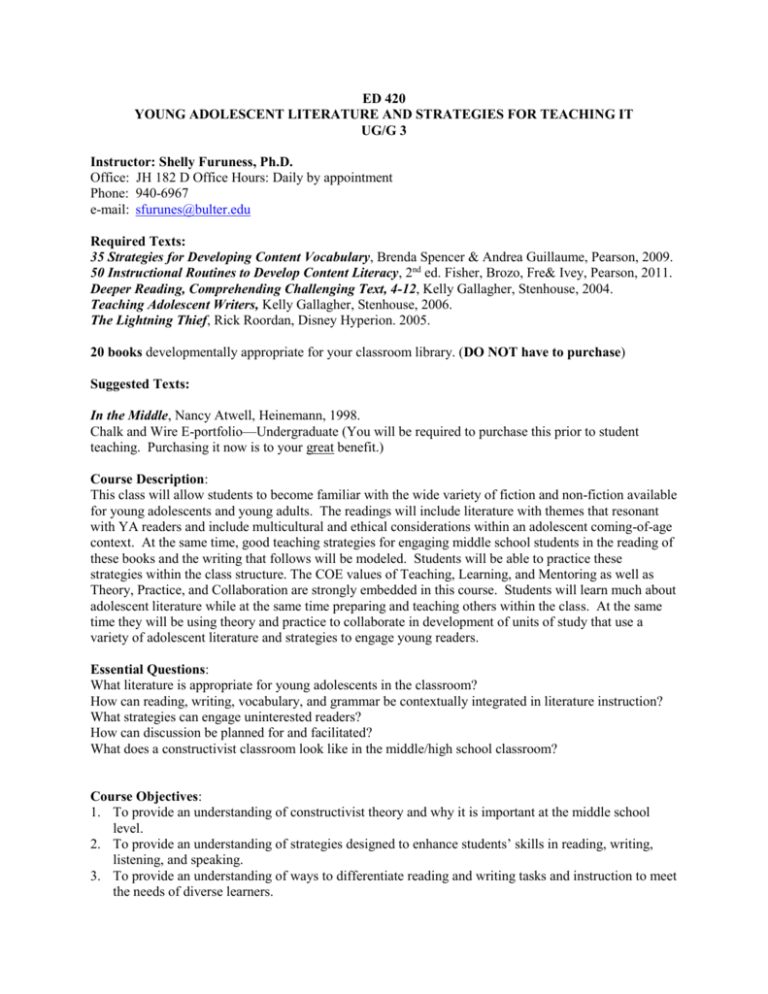
ED 420 YOUNG ADOLESCENT LITERATURE AND STRATEGIES FOR TEACHING IT UG/G 3 Instructor: Shelly Furuness, Ph.D. Office: JH 182 D Office Hours: Daily by appointment Phone: 940-6967 e-mail: sfurunes@bulter.edu Required Texts: 35 Strategies for Developing Content Vocabulary, Brenda Spencer & Andrea Guillaume, Pearson, 2009. 50 Instructional Routines to Develop Content Literacy, 2nd ed. Fisher, Brozo, Fre& Ivey, Pearson, 2011. Deeper Reading, Comprehending Challenging Text, 4-12, Kelly Gallagher, Stenhouse, 2004. Teaching Adolescent Writers, Kelly Gallagher, Stenhouse, 2006. The Lightning Thief, Rick Roordan, Disney Hyperion. 2005. 20 books developmentally appropriate for your classroom library. (DO NOT have to purchase) Suggested Texts: In the Middle, Nancy Atwell, Heinemann, 1998. Chalk and Wire E-portfolio—Undergraduate (You will be required to purchase this prior to student teaching. Purchasing it now is to your great benefit.) Course Description: This class will allow students to become familiar with the wide variety of fiction and non-fiction available for young adolescents and young adults. The readings will include literature with themes that resonant with YA readers and include multicultural and ethical considerations within an adolescent coming-of-age context. At the same time, good teaching strategies for engaging middle school students in the reading of these books and the writing that follows will be modeled. Students will be able to practice these strategies within the class structure. The COE values of Teaching, Learning, and Mentoring as well as Theory, Practice, and Collaboration are strongly embedded in this course. Students will learn much about adolescent literature while at the same time preparing and teaching others within the class. At the same time they will be using theory and practice to collaborate in development of units of study that use a variety of adolescent literature and strategies to engage young readers. Essential Questions: What literature is appropriate for young adolescents in the classroom? How can reading, writing, vocabulary, and grammar be contextually integrated in literature instruction? What strategies can engage uninterested readers? How can discussion be planned for and facilitated? What does a constructivist classroom look like in the middle/high school classroom? Course Objectives: 1. To provide an understanding of constructivist theory and why it is important at the middle school level. 2. To provide an understanding of strategies designed to enhance students’ skills in reading, writing, listening, and speaking. 3. To provide an understanding of ways to differentiate reading and writing tasks and instruction to meet the needs of diverse learners. 4. To provide opportunities to plan, implement and reflect on a literature unit that includes literature in thematic context designed to help students better comprehend text. University Student Learning Outcomes for Middle Secondary Program: SLO # 1: Develop developmentally appropriate, inquiry-based, and engaging instructional lessons for students in middle school and high school. SLO #3: Use both formative and summative assessments to inform instructional planning and evaluate/facilitate student academic and cognitive development. SLO #4: Assemble appropriate, inquiry-based, and engaging instructional experiences for students in middle school and high school. SLO#5: Adapt their instructional approaches and strategies to align with the academic, cognitive and language developmental needs of their students. SLO#6: Collaborate with students' families and community to promote student academic, cognitive and social development. SLO#7: Demonstrate responsibility for their interpersonal and instructional interactions with students, parents, colleagues, and community partners. SLO#8: Use critical reflection as a basis for improving their professional practices. University Standards Student Learning Outcomes (SLO) ASSIGNMENTS: Attendance & Participation Book Talks (with bookmarks) Teaching Demonstration (with lesson plan) Post to Wiki Reflections Teacher Guide (Unit Plan) for Selected Book Post to Wiki Annotated Bibliography (20 books) Post to Wiki 15 points 10 points each 10 points each 10 points each 30 points 40 points Attendance Policy: Since this is a professional education course and the assumption is that the student is preparing to enter the Profession of Teaching, attendance is expected and required. If the absence is necessary, the student should discuss the absence with the course instructor before the event (if possible) and definitely after the event. An assignment will be given in order to “cover” the missed material. Additionally, lateness to class is not acceptable. Due to the nature of the material and the course design, repeated absences will result in removal from the course. Disabilities Policy:If you are a student with a disability registered with the Student Disabilities Service, please discuss this matter with me. Please give at least a two-week notice for a specific accommodation. If you have additional questions or concerns, you may wish to contact Michele Atterson, coordinator of Student Disability Services at 940-9308. Academic Integrity:Students are expected to follow the principles of academic integrity as outlined in the Butler University Student Handbook. Date 8/30 Calendar, Ed 420: Activity Syllabus, Introductions, and Overview Assignments From now through December, you should be reading your 20 books throughout the semester 9/6 9/13 Labor Day: No Class Read and discuss “Constructivist Paradigm” Assignment Details Demonstration of Book Talk Discuss resources for Framing the Text and Building Background on the “Topic” for students. 9/20 Book Talks/Teaching Demonstrations 1 Read Gallagher 1-4 Deeper Reading Reflection #1: As you prepare your teaching demonstration what will you think about in terms of framing the text using “before” strategies in a constructivist framework? Be sure to show me how your reflection is shaped by Gallagher and in class reading. Read Gallagher In-class: Vocabulary Development 9/27 Book Talks/Teaching Demonstration 1 10/4 In-class: Recognizing Structures and Organization of Text Book Talks/Teaching Demonstration 1 In class: Developing Mini-lessons around Skills Read Gallagher Read Gallagher 5-7 in Deeper Reading and 1-2 in Teaching Adolescent Writers and Atwell chapter posted to wiki Reflection #1 due 10/11 Book Talks/Teaching Demonstrations 1 Reflection #2: Discussions are synonymous with English class. However, discussions are often little more than Q&A sessions between the teacher and a few students. What have you learned in the in-class, Gallagher and Atwell texts that will help you develop your own discussions in the classroom? Read Gallagher In class: Fostering Discussion-based classrooms 10/18 Book Talks/Teaching Demonstrations 1 In class: Practice developing discussion questions Read Gallagher 10/25 Book Talks/ Teaching Demonstrations 1& 2 Read Gallagher In class: Developing Mini-lessons around Skills 11/1 Book Talks/Teaching Demonstrations 2 In class: Developing Mini-lessons around Skills Read Gallagher 8-10 in Deeper Reading along with 3 and 7 in Teaching Adolescent Writers Reflection #2 due 11/8 Book Talks and Teaching Demonstrations 2 Reflection #3 As we begin to think about planning instruction for a whole unit, how might you use Atwell’s workshop approach, Gallagher’s discussion on backward design, and your own understanding of assessment to inform your own approach to teaching literature in your classroom? Read Gallagher In class: Developing Mini-lessons around Skills 11/15 Book Talks and Teaching Demonstrations 2 Read Gallagher In class: Developing Mini-lessons around Skills 11/22 11/29 Thanksgiving Break—No Class Book Talks/Teaching Demonstrations 2 Work on your annotated bibliography and resource guide: Reflection #3 due Authentic Assessments 12/6 Book Talks/Teaching Demonstrations 2 Authentic Assessments Resource Guide Due 12/13 Book Talks/Teaching Demonstrations 2 Final Class Meeting: Formative Feedback Annotated Bibliography Due ED 420 Assignment Descriptions: For the purposes of planning your demonstrations, please use Lightning Thief as the text, and post finished products to the wiki. Annotated Bibliography: 20 books See example below: Title: First Part Last Author: Angela Johnson Grade Level: 9-12 Description: Bobby is a normal teenage boy, who finds himself in the not so normal position of raising his infant daughter, Feather. Switching back and forth between the present and the past, you learn about Bobby’s relationship that led up to the pregnancy, how he works to balancing being a teenager and also caring for his daughter, and the fateful event that happened during Feather’s birth that leaves him to be a single parent, with the support of just his family. Classroom Notes and Uses: This text addresses a large issue for adolescent readers, and I feel would open the doors for great discussion. It explores the topic of teen pregnancy, while having underlying themes of family dynamics, interaction of people, relationships, and overcoming the hand you are dealt. I feel this text is short enough to do a read aloud in the classroom, just a few minutes each day to promote reading for pleasure, as well as open your classroom to an atmosphere of free discussion and pressing issues; which in turn I feel builds community and allows you to be a trusted confidant to the student. Book Talk: Directions: Prepare a 3-5 minute “book trailer” with book marks for two books Provide community resources for the wiki Expand our exposure to YA books Teaching Demonstration #1 Text Framing (PART I) and Teaching It (PART II): Directions for part one: Prepare a 10-12 minute activity using a strategy that will: Frame the text in a way that is enticing to your readers and helps create background in topic, structure or vocabulary Demonstrate good use of pre-reading strategies meant to build or assess background knowledge. Teaching Using During Reading Support Directions for Part two: Prepare a 15-20 minute segment of instruction using a during-reading strategy that will: Demonstrate ability to select appropriate texts support. Help readers engage and interact with text and support literacy in the language arts. Deepen the understanding that there is a difference between assigning reading and teaching for meaning. Post a clean copy of your lesson plan for this teaching demonstration. The lesson plan will cover the entire class period, but your demonstration will highlight 30-45 minutes within the lesson. Name Thanks for spoonfeeding…I’m not doing anything! I’ll work while you’re watching, but I’m just playing school. You’re doing a good job of making me work. I’m willingly engaged and WANT to read today! Your text framing “shows” the book instead of telling about the book You gave away the ending! You summarized the book jacket with a slightly dramatic reading of it. You utilize something visual to peak our interest. You utilize something visual, cool, and maybe even interactive. The text framing uses a studentcentered strategy that connects to student schema and accesses prior knowledge. You’re “strategy” was something like: Ok, listen up…We’re readin’ this book. Your strategy was little more than asking if we had any prior experience with the topic. Definitely something that we’ve seen work successfully in the field! Something that takes a little more risk on your part…trying something unique! Your classmates walk away with a new tangible and unique resource. Basically, here guys, write this down on your own paper. Followed whatever was modeled before…here’s another bookmark. Nice, I’ll probably use this in one of the thousand lesson plans I have to make this semester. Cool! This is going right in the resource file! Name: OK Good Impressive You nailed it! Preparation of a lesson plan. Clarity of objectives is evident in both oral and written form. Support strategy is clearly tied to the objective Delivery of the lesson Teaching Demonstration #2: Teaching GRAMMAR/LITERARY Skill mini-lesson (Part I) in CONTEXT to reading and discussion (Part II) Directions: Prepare a 10-15 minute mini-lesson that will: Provide practice on a selected grammatical or literary concept. Integrate skills instruction with language art text. Read Aloud and Guided Discussion Criteria (Part II) Directions: Move from mini-lesson into a 20-25 minute segment of instruction which includes planned pauses and questions for class discussion and a post–reading strategy assessment of comprehension. Students do not need to finish the assessment within the 20-25 minute segment, but they must receive the assignment. Objectives: To experience all eyes on you while you “perform” the read aloud. To practice dramatic reading for the purpose of modeling good, active reading. To practice planning for and developing good class discussion. Turn in a clean copy your lesson plan for this demonstration and your post-reading assessment. Name: Set up of mini-lesson OK Good Impressive You nailed it! OK Good Impressive You nailed it! Mini-lesson concept is clearly tied to the text Delivery of the lesson Name: Preparation of a lesson plan: Evidence of discussion preparation and assessment are embedded in the plan. Evidence of reading rehearsal and preparation for natural pauses to incorporate discussion. Delivery—variety of tone, voice, sense of drama. Selection and length of Read Aloud is appropriate to generating a whole group discussion. Mini-lesson Concept is evident in this part of the lesson Novel Resource Guide Requirements: This assignment is asking you to pull all of the individual assignments we’ve done this semester together to demonstrate how you may think about planning for and teaching an entire YA novel. You are more than welcome to use what you have already created as your starting point and then simply extend beyond that. So, if you were really pleased with one of your book talks and with the teaching strategy you used for it, start there and then think about how you would extend into your instruction during the reading and discussion time, and how you would assess students at the end of the book. Book Synopsis: “Book Talk” style summary and a contextual rationale for using this book. Things students need to know: What background content would help students better understand this text. For example, in Fallen Angels, what is necessary to know about the Vietnam War in order to make kids understand the context of the main characters choices? Writing, Grammar and Vocabulary Integration: How will you use the story as a provocation for students in the writing process? How will you integrate grammar instruction into the reading of the story? Most often, reading literature requires students to learn vocabulary in the context of the story. What can you do to help students understand unfamiliar words in the context of the story? Discussion Generation: Themes/ ideas/ issues raised by the story: Create a list with a MINIMUM of 5 themes, ideas, or issues raised that could be connected to student experience or could become the focus of whole class discussion. Related Books: Suggest a list of 5-7 books that could be related to the themes, ideas, or issues you’ve pulled from you novel. Include the author, title and very brief summary. This books may be from your annotated bibliography. Pre-Reading Activities: (Introductory Hook) Create a MINIMUM of 2 activities that build interest and background knowledge for students. During Reading: (Gallagher suggestions) Decide how this book will be read…individual, small group, partner, teacher read-aloud. Create a MINIMUM of 2 during-reading activities that you would have students do individually to deepen their comprehension of the novel. THEN create 1 or 2 activities to facilitate whole-group discussion around a theme, idea, or issue relevant to the book. Post Reading (Gallagher suggestions) Assessments: Create 2 possible assessment activities for students that reflect the goals of the previous activities and would demonstrate students’ comprehension of the reading.
